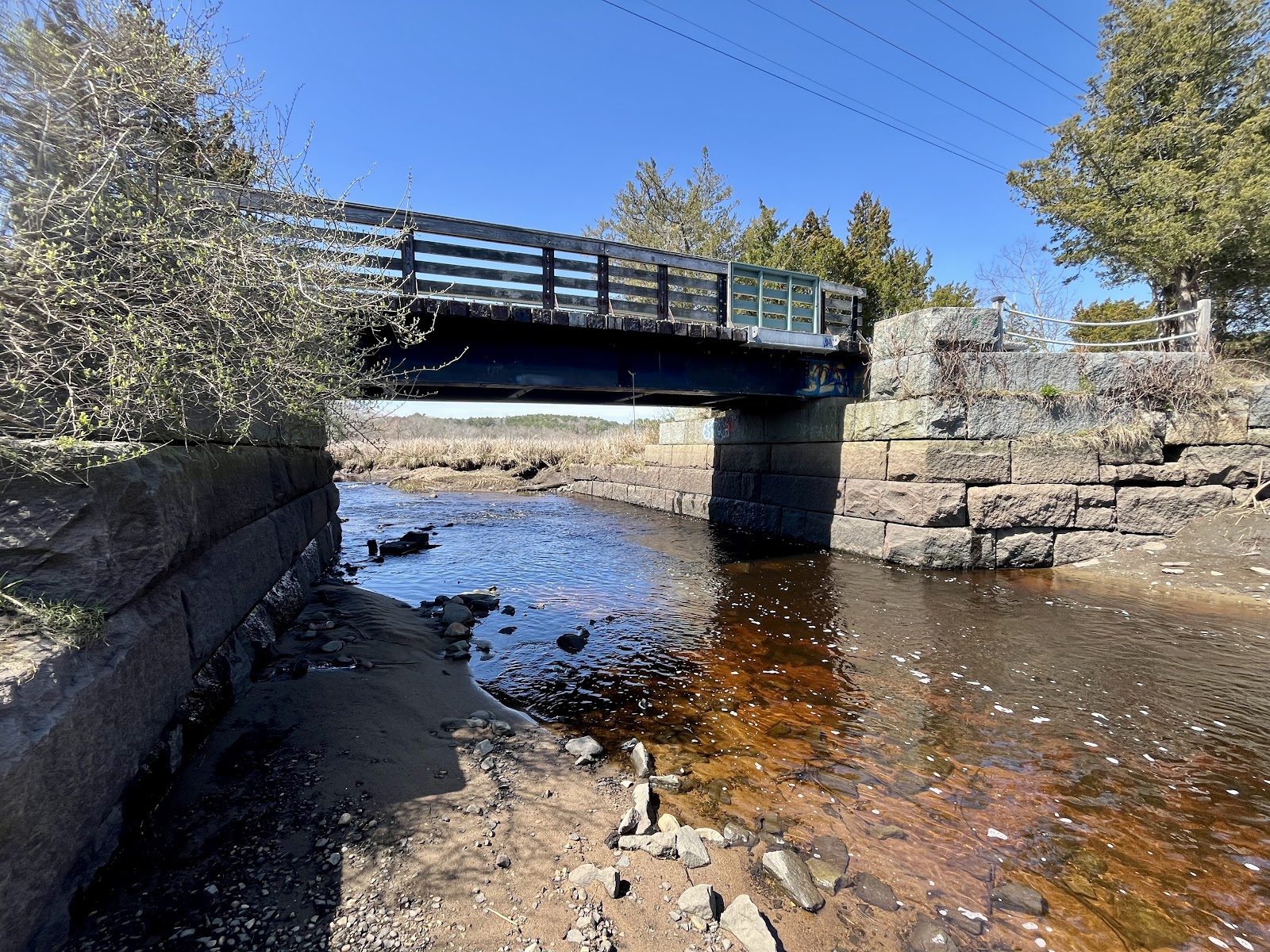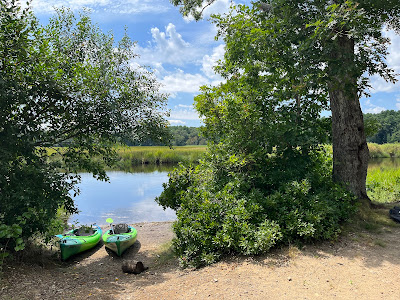Summer is coming and paddling season is here! Are you ready to get out on the water? Would you feel “more ready” if you had a better understanding of how the tides affect our local rivers? Come to our “Timing the Tides” presentation on June 17th at the Scituate Public Library, or watch for additional presentations later this season.
Our coastal rivers offer numerous public launch spots for non-motorized boats. For the past two summers, NSRWA has published articles on the various ways to explore them, and you can read them here and here. This year’s article includes favorites from the past along with additional suggestions. In addition, the Paddling section of our online Get Outdoors database lists 100+ places to launch.
When you go, be sure that every passenger wears a personal flotation device (PFD). Check the forecast before you leave. It’s no fun trying to out-paddle a thunderstorm. Remember that wind plays just as much of a role as tide, and plan accordingly if there’s a stiff breeze. And if you’re staging a second vehicle, stage a second set of straps (or carry them with you) so you can secure your boat for the ride home!
If you enjoy the outdoors, be sure to check out our Explore South Shore program for 2025. Every morning, we highlight one of the region’s best nature places on Facebook and Instagram. Every Wednesday we feature a spot with water access. Not on social media? We’ve listed all the locations on our website as well!
North River, Herring Brook, and Indian Head River
Stage a second vehicle at the Hanover Public Launch and then bring your boat to the Pembroke Town Forest on Brick Kiln Lane. Put your boat in the water in Pembroke around ocean high tide. Paddle upstream (to the left), past Fox Hill Shipyard and Third Herring Brook. Soon you’ll see the historic Washington Street Bridge. With the incoming tide in your favor, you’ll be able to paddle under the bridge. Bear in mind that – depending on the height and time of the tide -- the current may be quite swift! Continue past the Route 53 Bridge to the uppermost stretch of the North River, which is quite beautiful. Eventually you’ll come to a crossroads, known colloquially as The Crotch. If you have time to explore Herring Brook, bear left and spend some time paddling this quiet stream before returning to the crossroads. Otherwise, bear right and continue up the Indian Head River to the Hanover Public Launch. (2-3 hours on the water)
Herring River, North River and Cove Creek
Stage a second vehicle at the Marshfield Public Launch on Union Street. Bring your boat to Scituate’s Driftway Conservation Park, and put in the water about 3 hours before ocean high tide. Paddling down Herring River might be slow-going at first, as you’ll be working against the rising tide, but it’s a relatively short journey. When you get to the North River, turn upstream (to the right). From there, you’ll be able to ride the rising tide past Damon’s Point and the Route 3A Bridge. After another big bend in the river, look for Cove Creek on the left. At this point in the tide cycle, you’ll be able to explore quite a bit of the creek. Then return to the North River, continuing upstream to your second vehicle, just after the Union Street Bridge. Note: this journey is best undertaken when motorboat traffic on the river is low. Perhaps in the morning, or on a weekday. (3-4 hours on the water)
Bound Brook, Musquashcut Brook and the Gulf River
The Town of Scituate has done a lot of work at the Mordecai Lincoln Mill and Homestead, making it more accessible to the public and offering new opportunities for exploration. They recently established a launch area for canoes and kayaks on Bound Brook, which is a great spot for those seeking an out-and-back paddling excursion in this gorgeous expanse of river and marsh. Put your boat in the water 4 hours after the Cohasset low tide and head downstream (to the right). Musquashcut Brook and the Gulf River both offer opportunities to explore, but steer clear of the Border Street Bridge area where currents can be dangerously swift. We recommend returning to your starting point around the ocean high tide or soon after. (2-3 hours on the water)
Scenic South River Marshes
Begin at the South River public launch at Francis Keville Footbridge in Marshfield, a short walk down the Rail Trail from Dandelion Park. Put your boat in the water 2-3 hours before ocean high tide. Paddle downstream for an hour or two. You will be working against the tide, but it’s a pretty gentle tide this far upriver! Make a stop at the Bourne Island Lagoon, then ride the rising tide back to your starting place. Parking is available in Marshfield Center. (2-4 hours on the water)
North River – “No Gains” and Blueberry Island
Bring your boat to the Pembroke Town Forest on Brick Kiln Lane, and put it in the water about 4 hours after ocean high tide. Paddle downstream (to the right) toward Marshfield with the receding tide. Along the way, you’ll experience the winding “No Gains” section of the river and pass under Route 3. Continue onward to Blueberry Island or Couch Beach, where you can stop to stretch your legs and rest a while. By then, the tide will have turned, and you can paddle along with it back to your starting place. (4 hours on the water)
by Kezia Bacon
June 2025
Kezia Bacon's articles appear courtesy of the North and South Rivers Watershed Association, a local non-profit organization devoted to protecting our waters. For membership information and a copy of their latest newsletter, contact NSRWA at (781) 659-8168 or visit www.nsrwa.org. You will also find 27+ years of Kezia’s Nature columns there. For more information about the “Where in the Watershed?”/Postcards from the ‘Shed Contest, visit https://www.nsrwa.org/2025-nsrwa-explore-south-shore-contest-rules/














